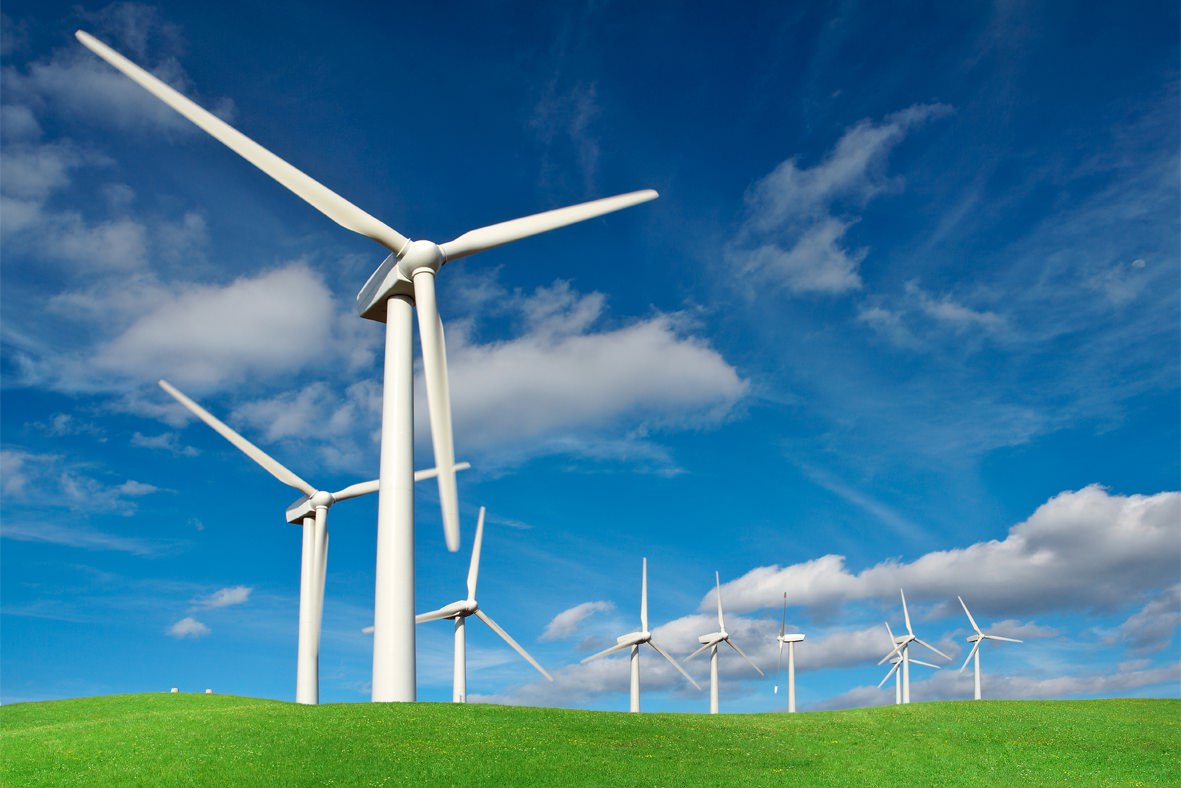
Wind is very powerful. It is generated by sun hitting uneven surfaces of the earth and as hot air rises, cold air fills in these gaps, thus creating wind patterns. This wind is then used to turn mechanical turbines and spinning the turbines generates electricity.
How it works
Most turbines are extremely tall-potentially the height of a 20 story building. They typically have three 200 foot long blades. When wind turns the blades, a shaft is powered which is connected to a generator that produces electricity.
One wind turbine has the potential to generate enough electricity to supply energy for approximately 600 US homes.
Current Uses
From 2000 to 2015, wind capacity around the world increased from 17,000 megawatts to over 430,000 megawatts. China is one of the leading countries in wind power. They recently surpassed the EU in number of wind turbines installed and are continuing this growth. Currently, the wind energy produced worldwide totals 65,000,000,000 kWh per year with 16,000,000,000 of those kWh produced in the US. This equates to enough power for 1.6 million homes. The potential is large and is projected to have enough power to supply 25 million homes yearly by 2020.
Cost
Wind energy costs approximately 2-6 cents/kWh once installed. One of the drawbacks of wind is the initial investment of wind farms. The machinery is very expensive and the costs of site preparation and instillation also have to be factored. However, there is no fuel required for purchase and the operating expenses are minimal. Additionally, advancing technology has decreased the cost of wind power dramatically over the past 10 years.
Advantages and Disadvantages
Benefits of Wind Energy include:
- Wind Energy produces no air or water pollution
- Wind is free!
- Advancing technology is lowering the price of wind turbines and government incentives are making wind energy development a growing industry
Limitations of Wind Energy:
- People close to wind turbines complain of their unattractive appearance and noise
- Blades have the potential to kill birds and bats (but statistically these percentages are relatively low)
- No wind blowing means no electricity generated
Future Outlook
Industry experts predict that if wind energy continues to grow at its current pace, by 2050 one third of the world’s electricity needs can be fueled by wind power!